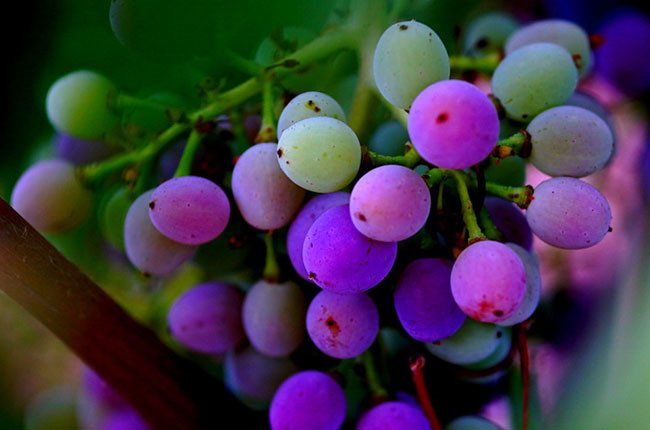Wine basics from the Chinese MW
I am in the middle of my annual travels to taste the 2014 vintage in France and Spain, hence the timely topic of climate during the growing season. Please note: the below is a very brief summary. The intricacies that could affect grape production during the course of a year could easily fill a book.

Image: young grapes © Decanter
Among the many factors that may influence the health, ripeness and therefore quality of the grapes harvested for a given vintage, climate is one of the most significant. Frost for instance, can be particularly damaging to the vulnerable spring buds during budbreak and disastrously affect yields.
As a buyer, flowering and fruit set are particularly important because it plays a significant role in yield, which affects price. Warm, dry weather is ideal for bloom and for the pollen of the self-pollinating grapevine to reach the stigma in order to initiate grape formation. Correspondingly, cold, rainy weather is not conducive to flowering and will result in poor fruit set and lower yields. Poor fruit set also leads to a condition called millerandage or ‘hen and chicken’ where bunches contain uneven sized (small and large) berries. The smaller berries have less juice and may not ripen, while this is not desirable due to green flavours it can bring to a wine, in certain varieties such as Chardonnay and Pinot Noir, it could increase concentration and add little complexity.
Yields can also be negatively impacted by adverse weather conditions during the growing season. Hail can devastate and rip through vineyards destroying leaves, knocking off bunches and damaging vines (Côte de Beaune in 2012, 2013 and 2014 as an example). Rain can be so relentless that an entire vintage is washed out (England in 2012). With rain and humidity there is always a risk of rot, which is detrimental to quality. Likewise, drought, often together with heat, can be equally damaging by arresting photosynthesis and desiccating berries. Quality is very much dependent on achieving balanced ripeness, both physiological and phenolic. This requires weather conditions that aren’t too extreme.
Finally, conditions during autumn and winter are also crucial because there needs to be enough rainfall to replenish the vines and temperatures low enough for dormancy but not too low as to damage the dormant buds that are destined to burst next spring.
It's almost miraculous, given the unpredictability of nature, that a winemaker is successful at crafting a good bottle of wine, especially in a difficult vintage. I must remind myself to savour this fact when seeking perfection in a glass.
Translated by Sylvia Wu / 吴嘉溦
All rights reserved by Future plc. No part of this publication may be reproduced, distributed or transmitted in any form or by any means without the prior written permission of Decanter.
Only Official Media Partners (see About us) of DecanterChina.com may republish part of the content from the site without prior permission under strict Terms & Conditions. Contact china@decanter.com to learn about how to become an Official Media Partner of DecanterChina.com.




Comments
Submit